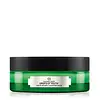What's inside
What's inside
 Key Ingredients
Key Ingredients

 Benefits
Benefits

 Concerns
Concerns

 Ingredients Side-by-side
Ingredients Side-by-side

Water
Skin ConditioningPropanediol
SolventGlycerin
HumectantDimethicone
EmollientHelianthus Annuus Hybrid Oil
EmollientPolysorbate 20
EmulsifyingDiheptyl Succinate
EmollientAcrylates/Beheneth-25 Methacrylate Copolymer
Phenoxyethanol
PreservativeTocopheryl Acetate
AntioxidantOrbignya Oleifera Seed Oil
EmollientBenzyl Alcohol
PerfumingCaprylhydroxamic Acid
Sodium Hyaluronate
HumectantSodium Hydroxide
BufferingParfum
MaskingDisodium EDTA
Adenosine
Skin ConditioningCaffeine
Skin ConditioningCapryloyl Glycerin/Sebacic Acid Copolymer
Skin ConditioningLinalool
PerfumingCitronellol
PerfumingLeontopodium Alpinum Meristem Cell Culture
Skin ConditioningLimonene
PerfumingCitric Acid
BufferingXanthan Gum
EmulsifyingWater, Propanediol, Glycerin, Dimethicone, Helianthus Annuus Hybrid Oil, Polysorbate 20, Diheptyl Succinate, Acrylates/Beheneth-25 Methacrylate Copolymer, Phenoxyethanol, Tocopheryl Acetate, Orbignya Oleifera Seed Oil, Benzyl Alcohol, Caprylhydroxamic Acid, Sodium Hyaluronate, Sodium Hydroxide, Parfum, Disodium EDTA, Adenosine, Caffeine, Capryloyl Glycerin/Sebacic Acid Copolymer, Linalool, Citronellol, Leontopodium Alpinum Meristem Cell Culture, Limonene, Citric Acid, Xanthan Gum
Hippophae Rhamnoides Extract
MaskingGlycerin
HumectantButylene Glycol
HumectantMethylpropanediol
SolventDipropylene Glycol
HumectantWater
Skin ConditioningNiacinamide
Smoothing1,2-Hexanediol
Skin ConditioningCyclopentasiloxane
EmollientHippophae Rhamnoides Fruit Extract
Skin ConditioningCyclohexasiloxane
EmollientSodium Polyacryloyldimethyl Taurate
Emulsion StabilisingBiosaccharide Gum-1
HumectantSodium Hyaluronate
HumectantPanthenol
Skin ConditioningDipotassium Glycyrrhizate
HumectantHydrogenated Polydecene
EmollientTrideceth-10
CleansingPortulaca Oleracea Extract
Skin ConditioningHamamelis Virginiana Extract
AntiseborrhoeicChamomilla Recutita Flower Extract
MaskingSaussurea Involucrata Extract
HumectantRubus Chamaemorus Fruit Extract
AntioxidantSelaginella Lepidophylla Extract
EmollientCarbomer
Emulsion StabilisingArginine
MaskingAllantoin
Skin ConditioningBambusa Vulgaris Water
Skin ConditioningNelumbo Nucifera Flower Water
TonicAloe Barbadensis Leaf Water
MaskingPentylene Glycol
Skin ConditioningCaprylhydroxamic Acid
Boswellia Serrata Resin Extract
SmoothingEthylhexylglycerin
Skin Conditioning3-O-Ethyl Ascorbic Acid
Skin ConditioningPhenoxyethanol
PreservativeHippophae Rhamnoides Extract, Glycerin, Butylene Glycol, Methylpropanediol, Dipropylene Glycol, Water, Niacinamide, 1,2-Hexanediol, Cyclopentasiloxane, Hippophae Rhamnoides Fruit Extract, Cyclohexasiloxane, Sodium Polyacryloyldimethyl Taurate, Biosaccharide Gum-1, Sodium Hyaluronate, Panthenol, Dipotassium Glycyrrhizate, Hydrogenated Polydecene, Trideceth-10, Portulaca Oleracea Extract, Hamamelis Virginiana Extract, Chamomilla Recutita Flower Extract, Saussurea Involucrata Extract, Rubus Chamaemorus Fruit Extract, Selaginella Lepidophylla Extract, Carbomer, Arginine, Allantoin, Bambusa Vulgaris Water, Nelumbo Nucifera Flower Water, Aloe Barbadensis Leaf Water, Pentylene Glycol, Caprylhydroxamic Acid, Boswellia Serrata Resin Extract, Ethylhexylglycerin, 3-O-Ethyl Ascorbic Acid, Phenoxyethanol
 Reviews
Reviews

Ingredients Explained
These ingredients are found in both products.
Ingredients higher up in an ingredient list are typically present in a larger amount.
Caprylhydroxamic Acid is a chelating agent.
Chelating agents help prevent metal ions from binding to other ingredients. This helps prevent unwanted reactions and effects from using the product.
Caprylhydroxamic Acid is often used with natural antimicrobial products as an alternative to preservatives.
Learn more about Caprylhydroxamic AcidGlycerin is already naturally found in your skin. It helps moisturize and protect your skin.
A study from 2016 found glycerin to be more effective as a humectant than AHAs and hyaluronic acid.
As a humectant, it helps the skin stay hydrated by pulling moisture to your skin. The low molecular weight of glycerin allows it to pull moisture into the deeper layers of your skin.
Hydrated skin improves your skin barrier; Your skin barrier helps protect against irritants and bacteria.
Glycerin has also been found to have antimicrobial and antiviral properties. Due to these properties, glycerin is often used in wound and burn treatments.
In cosmetics, glycerin is usually derived from plants such as soybean or palm. However, it can also be sourced from animals, such as tallow or animal fat.
This ingredient is organic, colorless, odorless, and non-toxic.
Glycerin is the name for this ingredient in American English. British English uses Glycerol/Glycerine.
Learn more about GlycerinPhenoxyethanol is a preservative that has germicide, antimicrobial, and aromatic properties. Studies show that phenoxyethanol can prevent microbial growth. By itself, it has a scent that is similar to that of a rose.
It's often used in formulations along with Caprylyl Glycol to preserve the shelf life of products.
Sodium Hyaluronate is hyaluronic acid's salt form. It is commonly derived from the sodium salt of hyaluronic acid.
Like hyaluronic acid, it is great at holding water and acts as a humectant. This makes it a great skin hydrating ingredient.
Sodium Hyaluronate is naturally occurring in our bodies and is mostly found in eye fluid and joints.
These are some other common types of Hyaluronic Acid:
Learn more about Sodium HyaluronateWater. It's the most common cosmetic ingredient of all. You'll usually see it at the top of ingredient lists, meaning that it makes up the largest part of the product.
So why is it so popular? Water most often acts as a solvent - this means that it helps dissolve other ingredients into the formulation.
You'll also recognize water as that liquid we all need to stay alive. If you see this, drink a glass of water. Stay hydrated!
Learn more about Water